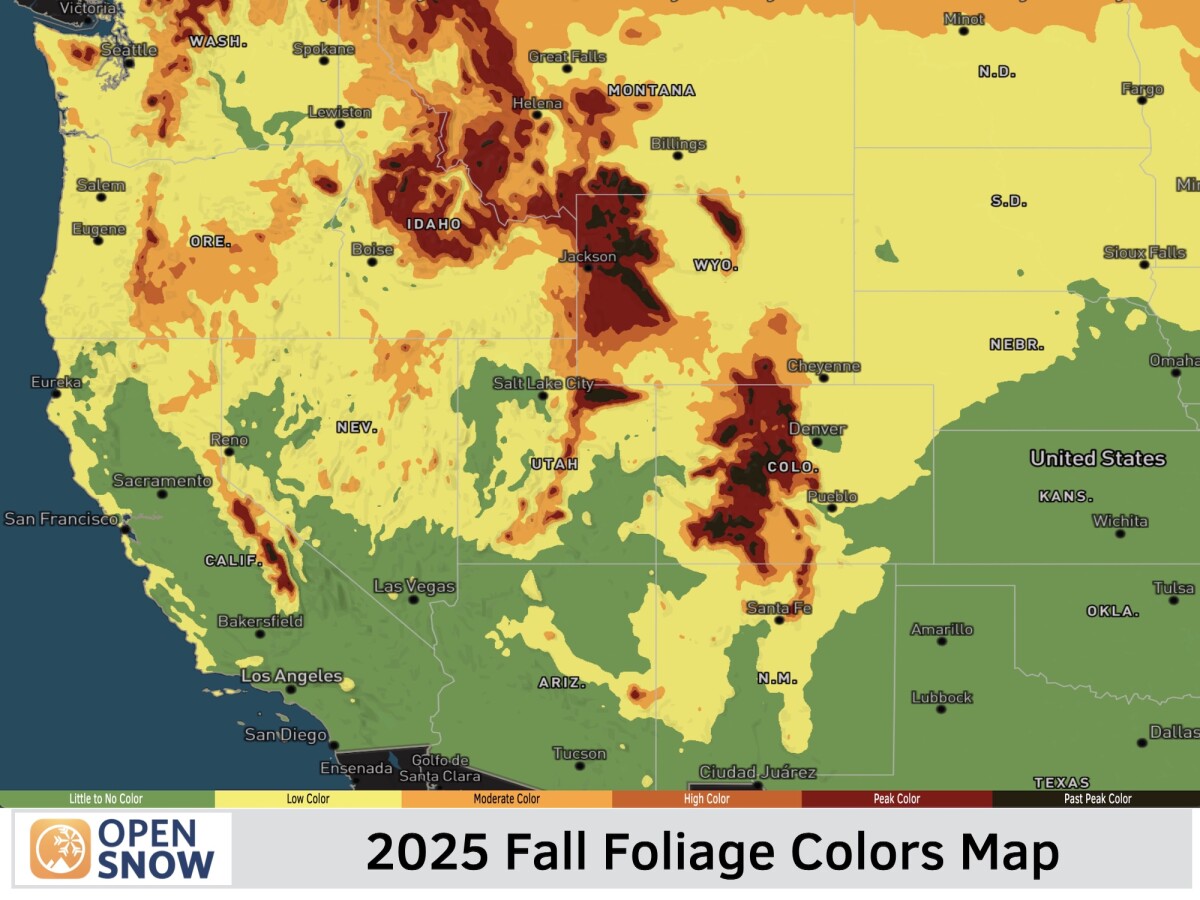News

By Zach Butler, Meteorologist Updated 1 year ago June 18, 2024
ENSO Outlook, Potential 2024-2025 Impacts
We have officially transitioned into ENSO-neutral conditions, which means El Niño is over. The forecast continues to show strong signals of a changeover to La Niña this summer and into the 2024-2025 winter. This article will explain what exactly La Niña is and what a La Niña episode could mean for summer weather and the 2024-2025 ski season.
Check out the current ENSO conditions of the sea surface temperature (SST) anomalies across the equatorial Pacific Ocean.

What is La Niña?
The term La Niña refers to the large-scale ocean-atmosphere climate phenomenon linked to periodic cooling in sea-surface temperatures (SSTs) across the central and east-central equatorial Pacific.
La Niña represents the cool phase of the ENSO cycle and means that the ocean water temperatures are cooler than average.
La Niña Criteria
- The average sea surface temperatures in the Niño-3.4 region of the equatorial Pacific Ocean were at least 0.5°C (0.9°F) cooler than average in the preceding month.
- The average anomaly of at least -0.5°C (-0.9°F) has persisted or is expected to persist for 5 consecutive, overlapping 3-month periods.
Current La Niña Status
We are now experiencing neutral ENSO conditions, which means SSTs are normal. There is an La Niña Watch, because of the expected changeover during July-September 2024.
The odds of La Niña developing by June-August 2024 is 40% and during July-September is 65%. The forecast continues to show strong signals of La Nina developing by the fall with an 85% chance during November-January.
A look at the latest SSTs over the past year shows the slow trend of SSTs cooling, approaching average, and even below-average temperatures.

For reference, each Niño region is a different area along the equatorial Pacific Ocean. The Niño region most focused on for ENSO conditions is Niño-3.4.

These SST trends are expected to continue and SSTs will cool over the equatorial Pacific Ocean. The timeline of these expected changes in SST will mean:
- ENSO-neutral will persist through June-August 2024.
- Transition to La Niña around July-September 2024.
Below is a look at the latest forecast of when the transition from ENSO-neutral to La Niña will begin.

Impacts of La Niña Summer
With the expected changeover to La Niña by July-September 2024, we can look at how La Niña can affect summer and fall weather across North America. The biggest effect La Niña causes is related to the hurricane season.
- See the latest Hurricane Season Forecast here!
La Niña SST changes in the equatorial Pacific Ocean cause cool and dry weather. Cool and dry weather causes strong vertical wind shear in the Pacific Ocean. Wind shear is the rate at which wind changes speed and or direction in horizontal and or vertical directions. Strong wind shear is not good for hurricanes in the Pacific Ocean that affect Central America and California.
In the Atlantic Ocean, there is the opposite effect of wind shear due to the cool and dry weather La Niña brings to the Pacific Ocean. There is more likely to be weak wind shear in the Atlantic Ocean, which can cause hurricanes to strengthen and become more frequent.
Every La Niña is different and unique, which can bring different impacts related to the hurricane season. Other weather patterns around the globe affect the hurricane season as well.

Impacts of La Niña Winter
We have been here before because we have seen La Niña winters from 2020-2023. There were three La Niña winters during this time and the last one during 2022-2023 gave the Western US record snowfall.
While it is too early to predict what this La Niña will bring for next winter, we can remind ourselves of what can happen (2022-2023) but also remember other winters that have not faired great in terms of snowfall for many areas in North America. Each La Niña is different and brings unique impacts.
The forecasted 2024-2025 La Niña winter will be year 4 out of 5 with La Niña. Similar high frequency La Niña's have happened before with several of them having big snow years across North America.
- 2007-2012 had 4 out of 5 years with La Niña.
- 1970-1976 had 5 out of 6 years with La Niña.
Based on past winter weather patterns since 1950 during La Niña, we can reference what might occur during the 2024-2025 North American winter.

Impacts of La Niña on South America
La Niña brings cooler SSTs, which causes drier and cooler weather over the equatorial Pacific Ocean. This can cause drier weather on the western side of South America, specifically during the Andes Mountain ski season. While the research and patterns are not as clear for these areas, the 2020-2023 triple-dip La Niña caused a prolonged drought in many areas of South America.
- Bookmark the South America Daily Snow for the latest updates!
Stay tuned to this article for your source on all things La Niña for the 2024 summer and into the 2024-2025 ski season!
Zach Butler
About The Author




